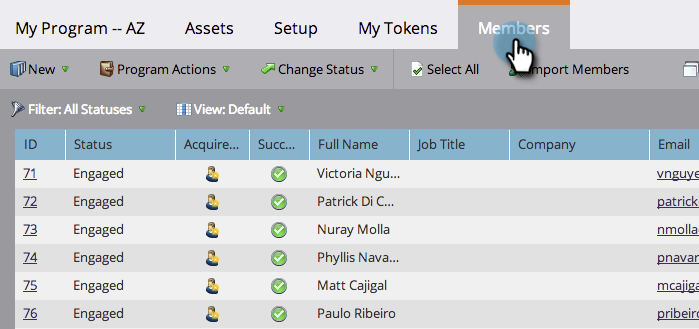
You don't even know if people read it or just left it in their downloads folder! You can't see which links they clicked on. You can't see which pages and topics people found interesting. You can't see how much of it people read or how long they engaged with it.
Pdfinfo. market pdf#
You may be able to see how many times a PDF was downloaded from a landing page, but you have no idea what people did with it afterwards. PDFs completely lack the ability to collect data. Problem 3: You can’t track reader engagement in a PDF This means using a format that doesn't require the user to leave his or her browser. If your goal is for your audience to engage with your content, you need to make accessing it easy with as few steps as possible. In a world where every ounce of friction equals lost opportunities, these extra steps can lead many users to abandon your content before even beginning. This is already a barrier for desktop users, but for mobile users, downloading files remains an almost alien task requiring a file manager app and a 3rd party PDF viewer.
Pdfinfo. market Offline#
Problem 2: They require multiple steps to accessīecause they're offline documents, PDFs require you to download them before viewing. Reading a Business PDF on a mobile device Just look at the image below and you'll see what I mean. In the mobile-first age, your audience doesn’t want the hassle of looking at something that doesn’t fit their screens. This is a huge user experience issue and can cause major headaches for your readers. Herein, however, lies one of the PDF's greatest downsides.įixed-layout means that documents designed for desktop or print, will be extremely difficult to use on a mobile device, requiring zooming in and panning around.

Pdfinfo. market mac#
For the first time ever, Windows and Mac users were able to exchange documents and read them without worrying about compatibility.Īnd PDFs are fixed-layout documents, meaning that regardless of what device, operating system, or screen size a reader uses, a PDF always renders exactly the same. Their strength lies in the fact that they work with any operating system.
Pdfinfo. market portable#
PDF is an abbreviation for portable document format, and there’s a reason why they’re named as such. The problems with using PDF for business contentĪdobe introduced the PDF in 1993 - more than a quarter century ago! But this post will provide a clear and compelling argument for why the world must move past PDFs, once and for all. Granted, adopting new technology can be daunting. Yet relatively few companies pay much attention to their content experience, preferring instead to cling to what they know - like legacy PDFs. And there's no arguing with the fact that the content you produce is a major part of how any customer experiences your brand. that you intend to share, it's high time to switch to a format that takes modern requirements like measurability and responsiveness into consideration.Īccording to SalesForce, 84 percent of buyers believe the experience a company provides is just as important as its products and services.
When should you use a PDF? Well, they're perfect for saving a digital receipt when you buy something online or for creating a document to send to your printer.įor digital business content - like eBooks, proposals, white papers, ABM assets, etc. They're certainly useful for some things, but it’s important to understand their limitations. If(all(file.exists(Sys.PDFs have been with us for a long time. Stop_for_status(GET(webpdf, write_disk(doc))) # save the file locally, write_disk() will act like a cache Library(httr) # this will make it easier to get to https conent This will get you the PDF content, but you should ask another question for the tm Corpus issues you're going to have.


 0 kommentar(er)
0 kommentar(er)
